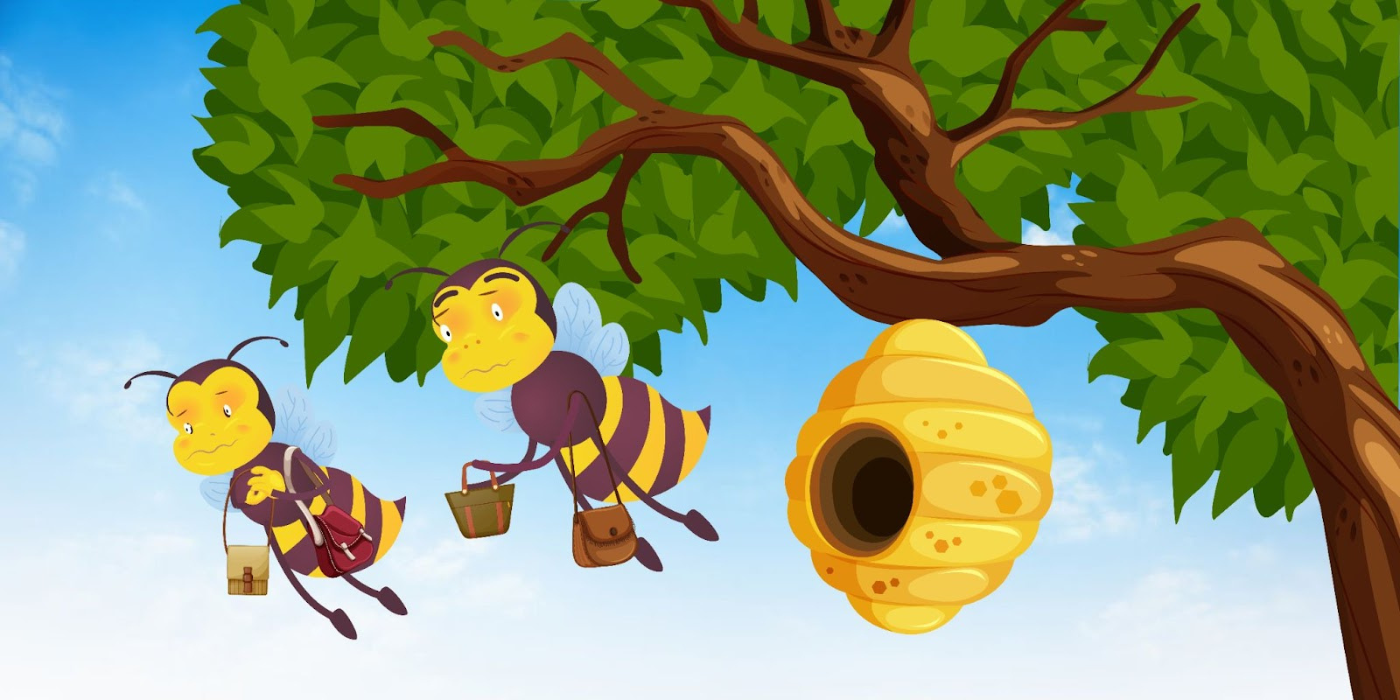
Your Guide to Swarm Prevention
In the interesting world of honeybees, swarming is a natural phenomenon that can be both awe-inspiring and unnerving. Swarming occurs when a honeybee colony reproduces, and a large group of bees, led by a queen, leaves the hive in search of a new home. While swarming is a vital part of the bees' life cycle, it can also be a cause of concern for beekeepers. In this blog, we explore the fascinating process of swarming, its significance in the life of bees, and practical swarm prevention techniques to safeguard the harmony of the hive.
What is Swarming?
Swarming is a natural behavior displayed by honeybee colonies when they outgrow their living space or sense the need to propagate. It involves the departure of a substantial portion of the colony, including the old queen, and the formation of a temporary cluster nearby. Meanwhile, the remaining bees raise a new queen to continue the legacy of the hive.
During this mesmerizing process, scout bees search for a suitable new home, evaluating various sites for size, safety, and access to resources. Once a consensus is reached, the swarm takes flight to their chosen location, establishing a new hive and continuing the cycle of life.
How to create an artificial swarm?
The Importance of Swarming
Swarming is a vital aspect of a honeybee colony's survival and genetic diversity. By splitting the colony, bees increase their chances of finding new habitats and resources, ensuring the continuation of their species. Additionally, swarming helps reduce overcrowding within the hive, preventing potential issues like disease outbreaks and resource shortages.
The Beekeeper's Dilemma
Swarm Control vs. Swarm Prevention
For beekeepers, swarming can be a double-edged sword. While it reflects a healthy and robust colony, losing a swarm means a reduction in honey production and potentially the loss of a valued queen. This is where the beekeeper's expertise comes into play – they face the challenge of balancing swarm control with swarm prevention.
Swarm Prevention Techniques
- Regular Hive Inspections: Regularly inspecting hives allows beekeepers to monitor colony growth and identify early signs of swarm preparations. Recognizing these signs early on provides ample time to implement preventive measures.
- Providing Adequate Space: Ensuring that hives have enough space for expansion can deter the bees from feeling cramped and overcrowded. Adding extra frames or supers during periods of rapid growth can alleviate congestion.
- Queen Replacement: Replacing an aging queen can sometimes delay swarming tendencies. Younger queens are less likely to initiate swarming, and introducing a new queen can reinvigorate the colony.
- Splitting the Hive: Artificially dividing the colony through a technique known as "splitting" can simulate a natural swarm. By creating a new hive with a portion of the bees and a young queen, the urge to swarm is mitigated.
- Nucleus Colonies: Maintaining nucleus colonies (nucs) is an effective way to prevent swarming. By dividing a strong colony into several smaller colonies, beekeepers reduce the risk of swarming while creating additional hives.
- Queen Excluders: Placing a queen excluder above the brood chamber and below the honey supers allows for honey storage without the risk of the queen laying eggs in the honeycomb, providing more space for honey storage.
Swarming is a remarkable aspect of honeybee life, showcasing the colony's ability to adapt and ensure its continuity. While it is a natural process, swarm prevention is essential for beekeepers seeking to maintain thriving colonies and maximize honey production. By understanding the behavior of bees and employing effective prevention techniques, beekeepers can ensure the harmony of their hives and play an active role in preserving these vital pollinators for generations to come.
So, let us embrace the dance of the bees while safeguarding the precious harmony of the hive through thoughtful and proactive swarm prevention measures.
General Question About Swarm Prevention
1. What is swarming in honeybees?
Swarming is a natural behavior where a large portion of a honeybee colony, led by the old queen, leaves the hive to establish a new home. This occurs when the colony outgrows its living space or feels the need to propagate.
2. Why is swarming important for honeybee colonies?
Swarming is vital for honeybee colonies as it helps ensure genetic diversity and survival by finding new habitats and resources. It also reduces overcrowding in the hive, preventing issues like disease outbreaks and resource shortages.
3. How can regular hive inspections help prevent swarming?
Regular hive inspections allow beekeepers to monitor colony growth and identify early signs of swarm preparations. Early detection of these signs provides time to implement preventive measures to avoid swarming.
4. What is the role of queen replacement in swarm prevention?
Replacing an aging queen can delay swarming tendencies, as younger queens are less likely to initiate swarming. Introducing a new queen can reinvigorate the colony and reduce the urge to swarm.
5. How does splitting the hive help in swarm prevention?
Splitting the hive involves artificially dividing the colony and creating a new hive with a portion of the bees and a young queen. This technique simulates a natural swarm, alleviating the bees' urge to swarm and expanding the apiary.
Happy beekeeping!



Leave a comment